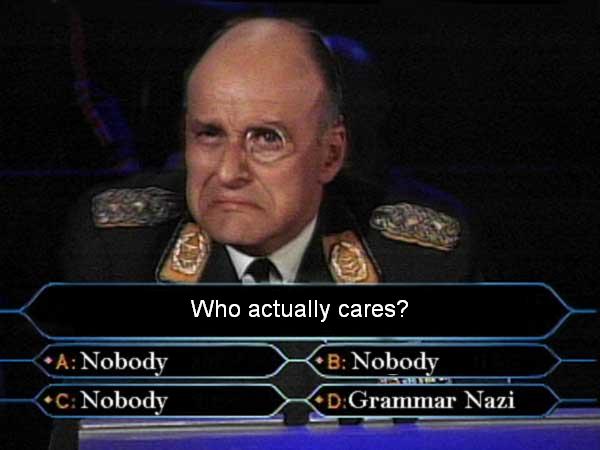JazzOne wrote:Unitas wrote:It is disparate impact I believe. Don't think it has ever been used for schools, but has been used for grades (ie testing). Didn't find the actual case I remember in the back of my mind, so not sure if this is what was used. Also why did I just look up a joke response of mine to make sure it was real...
http://en.wikipedia.org/wiki/Disparate_Impact From Wikipedia:
In US employment law, the doctrine of disparate impact holds that a Title VII violation may be established by showing that an employment practice or policy has a disproportionately "adverse effect" (referred to as an adverse impact) on members of the protected class as compared with nonmembers of the protected class.[1] "A facially neutral employment practice is one that does not appear to be discriminatory on its face; rather it is one that is discriminatory in its application or effect."[2] Where a disparate impact is shown, the plaintiff can prevail without the necessity of showing intentional discrimination unless the defendant employer demonstrates that the practice or policy in question has a demonstrable relationship to the requirements of the job in question.[3] This is the so-called "business necessity" defense.[1]
I think that only applies in the employment context.
Correct, but it could be argued to include this being as the grade here has a large determination in his employment prospects. Given that if you read the intent of allowing disparate impact broadly it should cover school grading, otherwise schools can determine who get the good
jobs after law school based on giving grades to gender or races they choose. Probably not a good argument, but would be fun.
Here is why only employment:
wiki
Such intent was manifested in the seminal case of Arlington Heights v. Metropolitan Housing Corp. (1977). In that case, the plaintiff, a housing developer, sued a city in the suburb of Chicago that had refused to re-zone a plot of land on which the plaintiff intended to build low-income, racially integrated housing. On the face, there was no clear evidence of racially discriminatory intent on the part of Arlington Heights's planning commission. The result was racially disparate, however, since the refusal supposedly prevented mostly African-Americans and Hispanics from moving in. Justice Lewis Powell, writing for the Court, stated, "Proof of racially discriminatory intent or purpose is required to show a violation of the Equal Protection Clause." Disparate impact merely has an evidentiary value; absent a "stark" pattern, "impact is not determinative." (See also Washington v. Davis (1976).)

